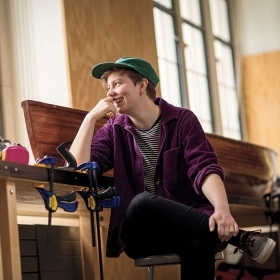As this magazine was going to press, the College announced the successful conclusion of the Campaign to advance the Wellesley Effect—an entire year ahead of schedule—as it exceeded its $500 million goal with gifts from more than 23,500 alumnae.
The Wellesley Effect is defined as the tangible, lasting effect a Wellesley education has on women, and therefore on the world. Dorothy Chao Jenkins ’68, a College trustee and one of the four co-chairs of the campaign, says, “This is my 50th-reunion year. I believe the Wellesley Effect accompanied me all those years. … I believe the liberal arts education allowed me to question and to appreciate my life more fully.”
The campaign focused on four priorities: intellectual community, affordability and access, a sense of place, and 21st-century impact. The Calderwood Seminars in Public Writing (see “Writing for Real,” spring ’18), in which students learn to persuasively present complex issues to general audiences, grew out of the intellectual community priority. The affordability and access priority allowed the College to expand and deepen its financial-aid program and increase its admissions outreach, both domestically and internationally (see “How I Got to Wellesley,” spring ’18).
Examples of reimagined environments springing from the sense of place priority include Pendleton West (see “The Art of Connection,” summer ’17), in which the College’s art spaces have been transformed to promote creative dialogue and cross-disciplinary collaboration, and renovations in the East Side residence halls—including common areas like living rooms, sitting rooms, and the Bates dining room, as well as outside recreational spaces. Wellesley’s groundbreaking new Career Education model (see “Concierge Career Advice,” spring ’18), one of the crown jewels of the campaign, is an example of 21st-century impact, a program that aims to serve the College’s mission in the face of the challenges—and opportunities—of our time.
How did the College exceed its ambitious campaign goal—the largest ever undertaken by a women’s college? “The entire Wellesley family was energized and mobilized by the hard work of the Resources and Public Affairs team, together with the WCAA. The Wellesley Effect was the invisible hand,” Jenkins says. “I want to express my sincere gratitude to the thousands of dedicated alumnae who contributed so generously time-wise and in monetary terms. I am very grateful for their invaluable input and advice throughout the campaign.”
That’s the Wellesley Effect.
For more on the campaign, visit campaign.wellesley.edu and watch future issues of the magazine. Trustees Sidney Knafel, Laura Russell Malkin ’82, and Susan Wagner ’82 joined Jenkins in co-chairing the campaign.








We ask that those who engage in Wellesley magazine's online community act with honesty, integrity, and respect. (Remember the honor code, alums?) We reserve the right to remove comments by impersonators or comments that are not civil and relevant to the subject at hand. By posting here, you are permitting Wellesley magazine to edit and republish your comment in all media. Please remember that all posts are public.